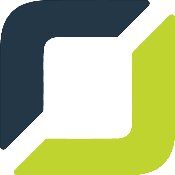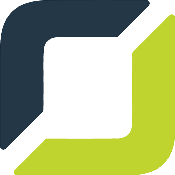In recent years, replatforming has become an important strategy for organizations aiming to scale, boost efficiency, and innovation. This article will explore various replatforming strategies, including the shift to cloud-based systems and integrating modern technologies and their profound impact on scalability, efficiency, and innovation.
We’ll discuss how businesses can leverage these tactics to enhance their operational capabilities, remain highly competitive, and promote a greater culture of continuous improvement throughout their organization.
The Benefits of Replatforming
 Replatforming entails transferring an app, site, or system from its current platform to a different one with minimal alterations to the fundamental code.
Replatforming entails transferring an app, site, or system from its current platform to a different one with minimal alterations to the fundamental code.
The strategy is often employed to take advantage of modern technologies and infrastructure, such as the cloud, which can lead to improved performance, greater scalability, and streamlined operational efficiency.
Rehosting involves moving an application or site to a new environment without modification or refactoring, and extensive rewriting of the core code is necessary. In contrast, replatforming strikes a balance by making necessary adjustments to optimize for the new platform.
One of the primary benefits of replatforming is significantly enhanced performance. By migrating to modern, cloud-based platforms, organizations can leverage advanced features such as better load balancing, faster data processing, and more efficient resource utilization.
This results in websites and applications that run more smoothly and reliably, ultimately providing a better experience for end-users. Scalability is another significant advantage; cloud platforms can easily scale resources up or down based on demand, allowing businesses to handle fluctuating workloads without compromising performance or incurring unnecessary costs.
The Opportunity for Personalization
Replatforming opens up numerous possibilities for customization and personalization, significantly enhancing user experience and engagement.
- Enhanced User Interfaces: Migrating to a new platform allows organizations to redesign and optimize user interfaces, making them more intuitive, visually appealing, and user-friendly. This transition facilitates the creation of personalized dashboards, tailored recommendations, and user-specific content, providing a more engaging experience for users.
- Advanced Analytics and Insights: New platforms often come equipped with advanced analytics capabilities that offer deeper insights into user behavior and their preferences. These insights can be leveraged to personalize user interactions, and businesses can deliver targeted content and services by understanding user needs and preferences more precisely.
- Integration with Modern Tools: Replatforming enables seamless integration with modern tools and services that enhance customization. Tools and services such as AI-powered chatbots, personalized marketing automation, and adaptive learning systems can all be integrated into the platform to create a more personalized user experience.
The Steps Behind the Replatforming Process
The replatforming process typically involves several key steps: assessment and planning, architecture design, code modification, data migration, testing, and deployment.
Each step is important for guaranteeing a successful transition to the new platform you’ll use.
 Assessment and Planning: Any replatforming project’s initial stage involves conducting a thorough evaluation of the existing system to determine the necessity for the process. An in-depth plan is then formulated that outlines the steps needed to seamlessly transition to the new platform while guaranteeing minimal disruption to current operations.
Assessment and Planning: Any replatforming project’s initial stage involves conducting a thorough evaluation of the existing system to determine the necessity for the process. An in-depth plan is then formulated that outlines the steps needed to seamlessly transition to the new platform while guaranteeing minimal disruption to current operations.- Architecture Design: In this phase, the architecture of the new platform is designed, including determining how the site or app will interact with the new environment, identifying any necessary changes to the codebase, and planning for data migration. This is to create a design that takes full advantage of the new platform’s capabilities while making sure the new system is compatible with existing systems.
- Code Modification: With the architecture in place, the next step is to modify the code to make sure that it runs smoothly on the new platform. This might involve updating libraries, improving performance, and making other necessary adjustments. The idea here is to make minimal changes to core functionality, focusing instead on adapting it to the new environment.
- Data Migration: Data migration is an essential part of re-platforming. It involves transferring all relevant data from the old platform to the new one to maintain data integrity and security throughout the process. This step requires careful planning and execution to prevent data loss and minimize downtime.
- Testing and Deployment: Before fully transitioning to the new platform, you should thoroughly test to guarantee that the website or application works properly. Once you’ve resolved any issues following the testing phase, you can deploy the application or site on the new platform.
Replatforming Strategies & Approaches
You can employ different strategies in a replatforming project, depending on the specific prerequisites and objectives of the organization. Some of the most common approaches include lift and shift, containerization, refactoring, re-architecting, and rebuilding.
- Lift and Shift: This strategy entails the seamless migration of workloads to a different environment with minimal adjustments needed. It’s often used for quick and cost-effective migrations, particularly when an organization needs immediate modernization without extensive changes.
- Containerization: Containerization is a software deployment approach that bundles applications and their dependencies into self-contained units, allowing seamless portability and consistent execution across diverse environments. These containers help guarantee consistent deployment across differing environments enabling efficient and reliable management.
- Refactoring: Refactoring is a process of restructuring and improving the existing code while maintaining its external behavior. Its primary aim is to enhance performance, scalability, and maintainability.
- Re-architecting: Sometimes, a complete overhaul is necessary. Re-architecting is restructuring an application or website to optimize its alignment with a new platform’s capabilities and achieve specific business objectives.
- Rebuilding: When the existing system is too outdated or inefficient, rebuilding from scratch might be the best option. This approach offers complete control over the new architecture and features, allowing you to design something optimized for modern cloud environments.
The Risks & Challenges in Replatforming
While replatforming can be highly beneficial for businesses of all sizes, you must be aware of the risks and challenges you may face. Some potential issues you can face include data loss, potential downtime, possible compatibility problems, and even disruption to business operations.
Mitigating these risks necessitates a strategic approach characterized by having a solid plan that’s precisely executed upon. Your planning and execution should include thorough testing, contingency planning, and continuous monitoring to provide a smooth transition and minimize any potential disruptions.
 Another challenge you must overcome is managing the technical debt typically associated with working with legacy systems. Replatforming projects must carefully address this debt to avoid introducing new complexities and costs.
Another challenge you must overcome is managing the technical debt typically associated with working with legacy systems. Replatforming projects must carefully address this debt to avoid introducing new complexities and costs.
Organizations must be diligently mindful of vendor lock-in to make sure that they’re flexible while avoiding dependency on a single cloud provider.
Essential Post-Replatforming Optimization
After successfully replatforming, managers and team leaders must engage in continuous optimization. This will help to fully realize the new system’s benefits and maintain its performance over the long term.
- Performance Monitoring: Implementing powerful monitoring tools is essential for tracking system performance, identifying possible bottlenecks, and keeping your operations optimal. Continuous monitoring provides real-time insights and proactive management, enabling quick adjustments to maintain peak efficiency. Effective performance monitoring can help prevent issues before they impact users, providing a more reliable experience.
- Regular Updates and Maintenance: Make sure your platform is constantly updated to keep it secure and regularly maintained to keep it operating at its best. This prevents the potential for attacks resulting from vulnerabilities while also keeping the system compatible with shifting business needs.
- User Training and Support: Thorough training and ongoing support for your users can help maximize the new platform’s potential. Investing in user education and support systems facilitates a smooth transition. Users with proper training are likely to fully utilize the platform’s capabilities fully, leading to better productivity and reduced support costs over time.
Measuring the ROI of Replatforming
Once the replatforming is complete and your system has been optimized, you will want to conduct a thorough ROI analysis.
It can help determine whether your replatforming efforts are actively aligning with business objectives and delivering the expected financial and operational benefits.
- Cost Savings: Analyze the reduction in operational costs, maintenance expenses, and infrastructure investment resulting from replatforming. By migrating to a more efficient platform, organizations can often reduce their reliance on expensive on-premises hardware and decrease ongoing maintenance costs. Cloud-based solutions, for instance, offer pay-as-you-go pricing models, which can lead to substantial savings compared to traditional infrastructure.
- Performance Gains: You want to carefully measure any improvements in system performance, user experience, and scalability to assess the tangible benefits achieved. Improving your performance can lead to faster load times, improved application responsiveness, and the ability to handle increased traffic without service degradation. These improvements directly impact user satisfaction and can lead to higher engagement and conversion rates.
- Business Impact: Finally, evaluate how replatforming has contributed to achieving business objectives, such as increased revenue, market competitiveness, and innovation. Replatforming can enable organizations to adapt to market changes quickly, introduce new features, and improve overall business agility. These factors can drive growth, enhance customer loyalty, and position the company more favorably against competitors.
Team With The Replatforming Experts
![]() Replatforming can be an important step for businesses that want to remain competitive and efficient in an increasingly saturated marketplace.
Replatforming can be an important step for businesses that want to remain competitive and efficient in an increasingly saturated marketplace.
Moving to cloud-based systems and adopting modern technologies can transform your operations, making them more agile, scalable, and innovative. However, this process can be complicated, necessitating careful planning and thoughtful execution.
At Orases, we understand that maintaining adaptability and staying competitive is essential to your business’s success. Our replatforming and cloud migration services are designed to meet your needs, making the transition from outdated platforms to newer, more efficient ones as seamless as possible.
If you’re ready to see how replatforming can benefit your business, set up your 30-minute, no-pressure consultation today by visiting us online or calling us at 301.756.5527 to begin.






